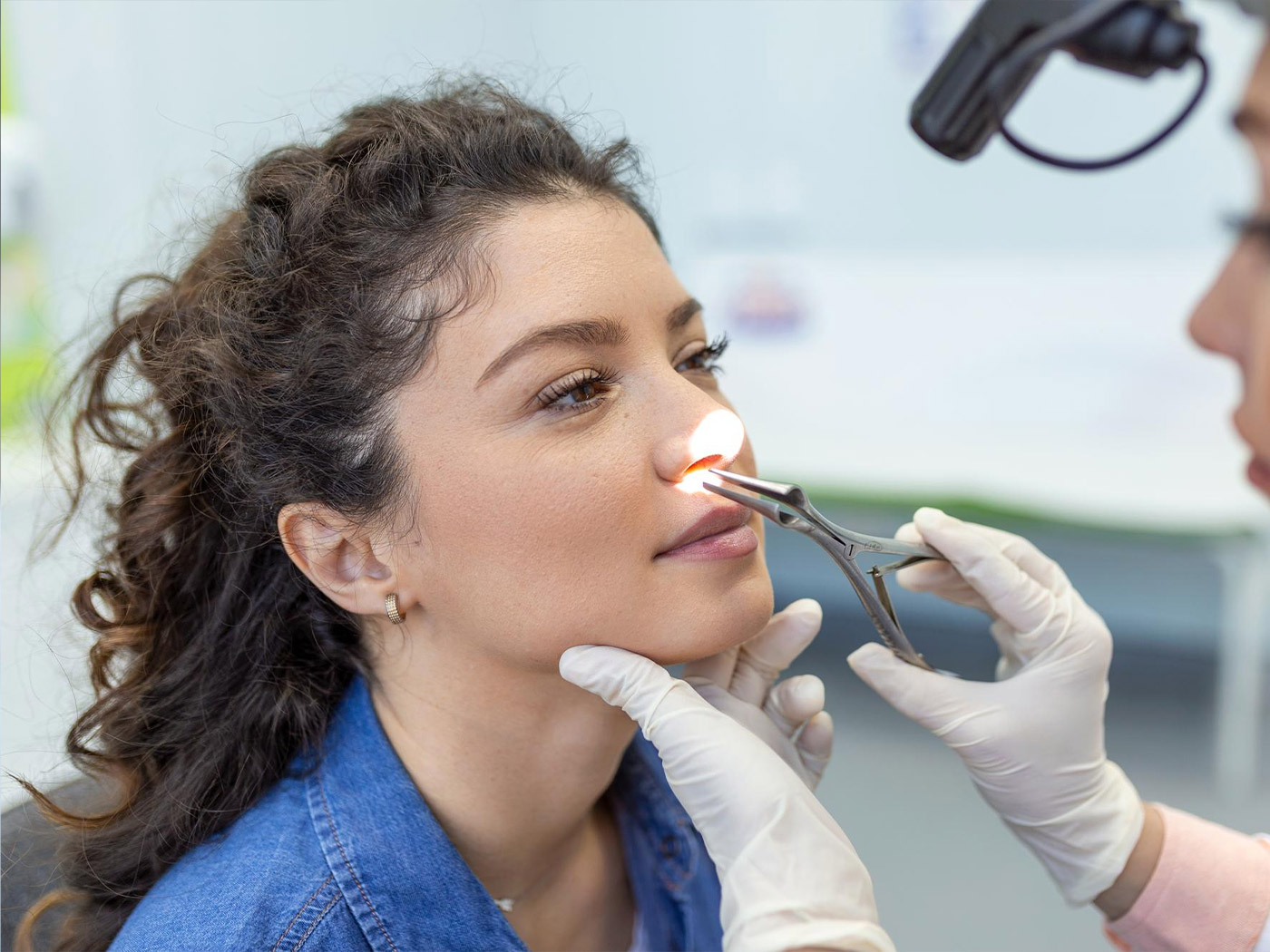

17.12.2024.
What factors can be an obstacle for nose surgery?
What factors can make nose surgery difficult? Belgrade. TOP PRICE✓ Rhinoplasty✓ Nose correction✓ Septoplasty✓ Rhinosinusitis✓ Thickening of the skin on the nose✓
Rhinoplasty is a popular cosmetic procedure, but it may not be suitable for everyone and comes with certain risks, particularly for individuals with pre-existing health conditions. Before making a decision about this surgery, it is crucial to consider all the factors that can influence your recovery and the final outcome of the procedure.
What factors can be an obstacle for nose surgery?
Nose surgery, whether it involves aesthetic rhinoplasty or functional procedures like septoplasty or deformity correction, is not suitable for everyone. While this procedure is generally considered safe and effective for improving both the appearance and function of the nose, various factors can influence whether surgery is the right choice for you.
When is the Best Time for Rhinoplasty?
Age plays a significant role in determining the best timing for nose surgery, as well as the outcomes of the procedure. The ideal time for rhinoplasty typically occurs after the nose has fully matured. Generally, girls' noses finish developing between ages 15 and 17, while boys' noses reach their final shape between ages 17 and 19. For this reason, nose surgery in young individuals is performed only after nasal development has stabilized, as premature surgery may lead to undesirable results.
Middle-aged patients (ages 20–50) often achieve the best results. At this age, the skin retains enough elasticity to support effective recovery and maintain aesthetic results. Additionally, the nasal structures, such as cartilage and bones, are stable, allowing the surgeon greater predictability and precision in shaping the nose. Furthermore, individuals in this age group typically do not have significant health issues that could complicate the surgery.
Older patients (aged 50 and above) may face challenges due to changes in the skin and nasal structure. As we age, the skin loses elasticity, and cartilage can become more fragile. These changes can complicate the achievement of desired results, as the surgery may need to be adjusted accordingly. Older patients often also have pre-existing health conditions, such as high blood pressure, diabetes, or cardiovascular diseases, which can heighten the risk of complications during surgery. Therefore, a comprehensive health assessment is crucial for elderly patients before considering rhinoplasty.
Skin Condition and Its Role in Nose Surgery
The condition of the skin is one of the most vital factors in assessing suitability for nose surgery. The shape of the nose depends not only on its structural components (cartilage and bones) but also on the skin that covers these structures. Factors such as skin thickness, elasticity, and existing skin issues can significantly influence the techniques used by the surgeon and the final results.
- Thin Skin: Individuals with thin skin often achieve more precise and dramatic results. The thin skin allows the surgeon to visualize structural changes more effectively, and recovery is usually quicker because the tissue does not need to stretch significantly. However, the fine layer of skin may reveal subtle imperfections that would be less noticeable with thicker skin.
- Thick Skin:Conversely, thick skin can hinder the ability to achieve fine details and precise shapes. The greater thickness may obscure visible changes in the nasal structure, resulting in less dramatic outcomes. Patients with thick skin may require more complex surgical techniques, including detailed cartilage modeling to achieve the desired aesthetic effects. In the postoperative period, thicker skin may also adapt more slowly to the new shape of the nose.
- Skin Problems: If a patient has existing skin issues, such as acne or rosacea, these conditions can impact surgical planning. The surgeon must assess how these problems might affect recovery and results, and in some cases, treatment may be necessary before proceeding with the nose
Chronic Sinus Problems
Chronic sinus issues, such as rhinosinusitis, can significantly affect rhinoplasty planning. Conditions like chronic sinusitis can impede proper nasal breathing, which may warrant surgery. However, such problems necessitate special attention during the preoperative planning phase.
Preoperative Assessment
The first step is a thorough medical evaluation that includes a sinus examination, diagnostic tests (like X-rays or CT scans), and a review of the patient's medical history. For those with chronic sinus problems, the surgeon may suggest additional procedures, such as septoplasty (correction of the nasal septum) or turbinate reduction (removal of tissue inside the nose), to improve sinus drainage and facilitate better breathing.
Postoperative Care
After surgery, patients with chronic sinus issues require careful monitoring and regular follow-ups to ensure proper sinus function. In some cases, prolonged treatment or nasal irrigation may be necessary to prevent infections and expedite recovery.
Smoking poses significant risks to the success of nose surgery. Nicotine narrows blood vessels, leading to reduced blood flow, which complicates wound healing. Smokers typically experience a longer recovery period and are at a higher risk of infection, which can result in unfavorable postoperative outcomes, such as scarring, tissue necrosis (death of tissue), and alterations in the nose's structure.
Key Risks Include:
- Impaired Wound Healing: Smokers often have delayed recovery, and the wounds may not close effectively.
- Increased Risk of Infections:Smoking compromises the immune system, raising the likelihood of postoperative infections.
- Tissue Necrosis and Deformities: Restricted blood flow can cause damage to skin and tissue, potentially leading to nasal deformities.
- Poor Aesthetic Results: Due to inadequate healing, there is an increased chance of scarring and asymmetry in the nose.
For these reasons, it is strongly advised that smokers cease smoking at least 2-4 weeks prior to surgery and refrain from it during the recovery phase.
The Price of Nose Surgery in Our Clinic
The cost of rhinoplasty at our clinic varies based on the type of procedure. Full nose operations start at €2.700 (regular price €3,000), while tip surgeries begin at €1,100 (regular price €1,300).
When compared to countries such as Turkey, where prices can range from €1,500 to €5,000, our clinic offers competitive pricing alongside high-quality service and the expertise of our surgeons.
Take Advantage of the Promotional Offer!
Enjoy extra savings with our promotional offer, which covers everything from initial consultations to post-operative care, ensuring a commitment to quality and safety. With over 7,000 successful procedures, we strive to deliver the best possible results at an affordable cost.
How to schedule a rhinoplasty appointment?
If you'd like to schedule an appointment for rhinoplasty, inquire about the prices for nose surgery, or have additional questions, please contact us by phone at +381 65 202 77 77 or visit the following pages: Nose Surgery, Nose Tip Surgery, and Full Nose Surgery.
Royal Plastic Surgery
Why choose us?
The best, most affordable and safest aesthetic clinic in Belgrade and Serbia.

